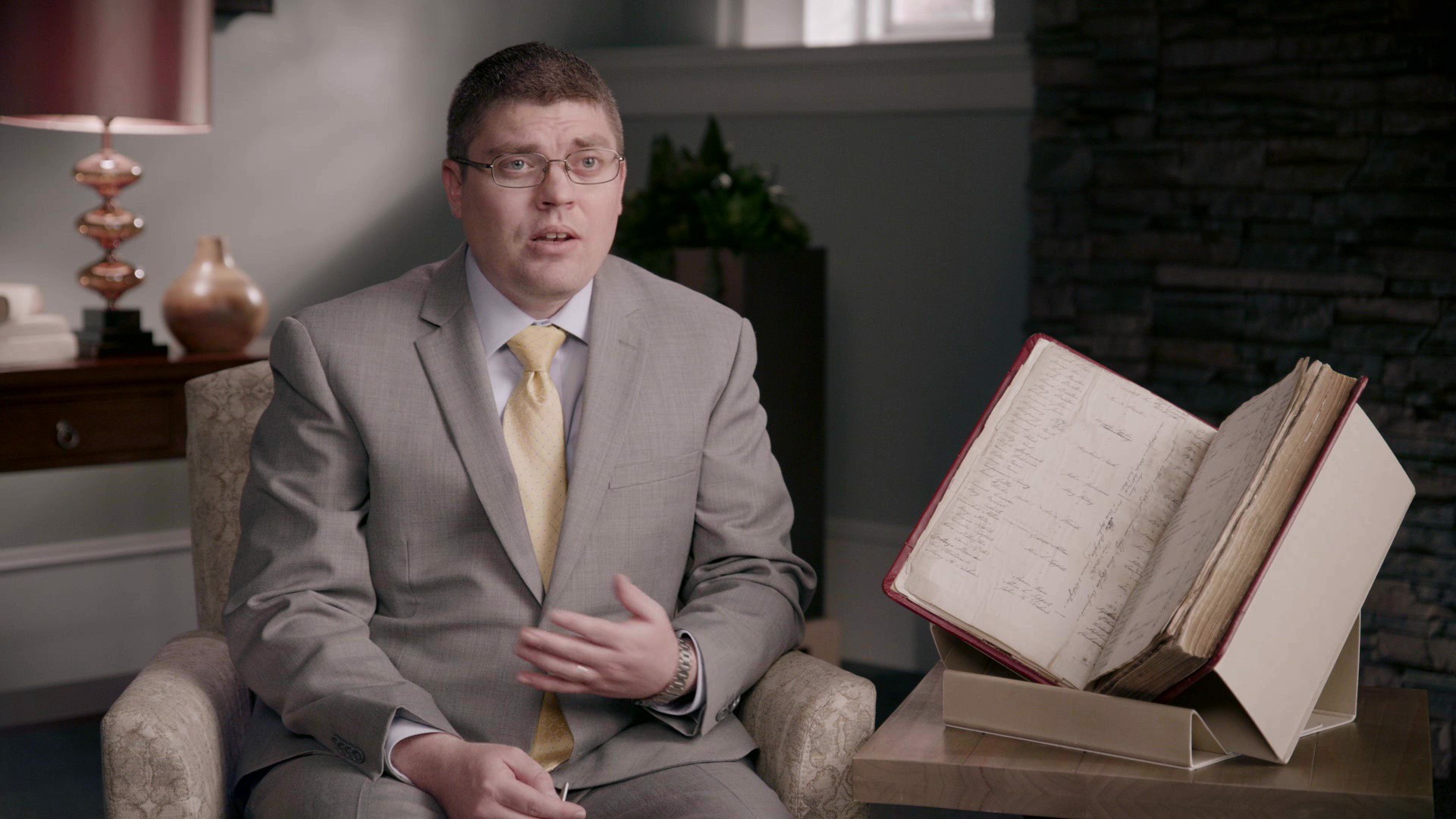
Transcript
On August 15, 1840, Joseph Smith preached a sermon at the funeral of Seymour Brunson, a Latter-day Saint who had passed away. Joseph Smith taught the Saints about a principle called baptisms for the dead, where they could act as proxy in the ordinance of baptism for deceased relatives, family, and friends. Later that fall, the first baptisms for the dead were performed in the Mississippi River. Throughout 1840 and 1841, baptisms for the dead continued in the Mississippi River, with Saints regularly performing these baptisms and then recording these baptisms in different record books. In 1842, Joseph Smith began to teach the Saints about the need for better record keeping. On September 1, 1842, he wrote a letter to the Saints telling them that there needed to be a recorder at each of these baptisms and that they needed to keep accurate records. He then told the Saints that he would send them more information about this at a later date. On September 7, 1842, Joseph was in hiding at the home of Edward Hunter, trying to evade arrest on false charges that he had contributed to the attempted assassination of Lilburn W. Boggs. He dictated a long letter to William Clayton, and in this letter he gave this additional information that he had promised about baptisms for the dead and about how those records were to be kept. He told the Saints that these ward recorders would not only keep a record of who had acted as proxy and who they had been baptized for, but also the date that the ordinance had occurred, as well as the names of two or three witnesses who had been there for that baptism to verify that it had happened. This was an important moment for record keeping in the Church, as it was a dramatic change from those older records, where Joseph Smith was asking them to keep better records. Now, this letter was written on September 7, and Joseph instructed that it was to be read to the Saints during their Sunday meeting on September 11, 1842. That evening, the Saints went down to the Mississippi River and began performing baptisms for the dead. As we look at the Nauvoo baptisms for the dead records, we see in book C, the first entry is for the evening of September 11, 1842. This is inspiring to me that these first entries occur on the evening of September 11, 1842. The first time that the Saints had heard all of this information, they immediately wanted to begin keeping accurate records in the way that the Prophet had asked them to do. You see that the records include the names of those who acted as proxy, those that they were baptized for, the names of the witnesses who had been present, and then the relationship of the proxy to the person who had been baptized. Another part of the Prophet Joseph Smith's letter to the Saints was instruction that the general Church recorder was to have a witness or a testimony that the records that were kept in this book are true. On this first page in the record book, you see that testimony written by James Sloan, who was the general Church recorder, verifying that the records contained within this book were kept according to the instructions that had been received from Joseph Smith on September 7, 1842. Another example of the records within this book are these small slips of paper written by ward recorders and then delivered to James Sloan, the general Church recorder, including the information that was necessary. You see the dates that baptisms occurred. You see who was baptized as proxy for whom and what their relationship was. Throughout this record book, you see a witness of the Saints trying to be obedient to very precise commandments that they had received from the Lord through the Prophet Joseph Smith.